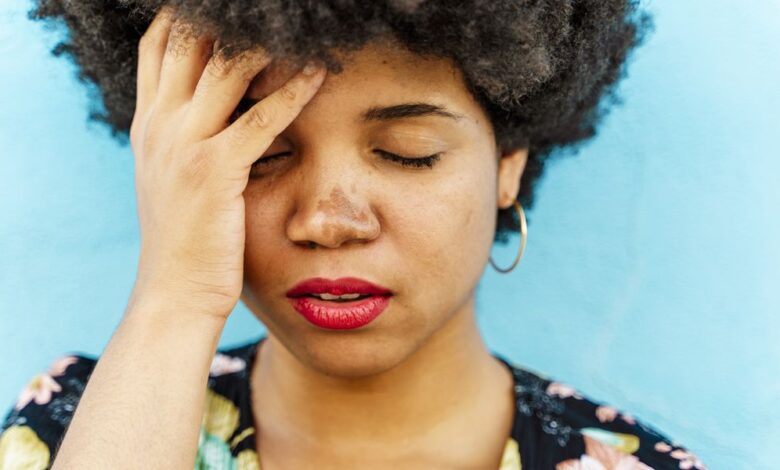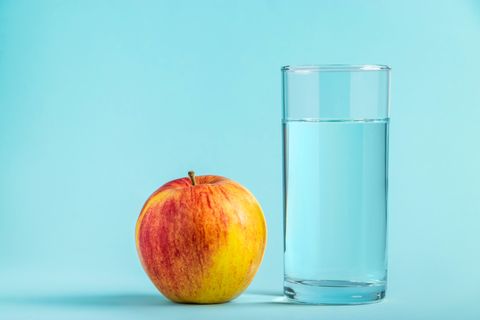How to Prevent Migraines – 8 Migraines Prevention Tips

Anyone who suffers from the hell that is migraine headaches wonders the same thing: Are there any effective ways to stave off the next headbanger? When you hit the internet, you’ll come up with a wide range of ideas — but not all of them science-based. So what’s really been shown to work? “While there is no cure for migraine, there are many effective treatments,” says Lauren R. Natbony, MD., neurologist and headache specialist at the Icahn School of Medicine at Mount Sinai. “And the simplest treatment is making changes to your lifestyle.”
Here are 8 different ideas you can try to block the next moan-inducing migraine.
Look at your diet
Can you prevent a migraine by avoiding certain foods? Possibly, though there isn’t a whole lot of evidence to back up the idea that specific foods are triggering. Take chocolate, for example: There are small studies that say it could be a problem — and other research showing that it might actually help migraines.
And even if you are reactive to certain foods, it can be super hard to figure out what your particular triggers are. For one thing, a migraine can come hours after you’ve eaten a food —and who’s to say that something else (say, stress or the weather) didn’t set it off?
There is some research suggesting that the ketogenic diet (which focuses on high fat/low carb foods) might prevent migraines. According to one study of 96 people, those following a keto diet had less frequent migraines. Dr. Natbony says that though there is limited evidence, it’s plausible that the diet could help. Another way of eating that’s been shown to possibly have a positive impact on preventing migraine, says Dr. Natbony, is eating more omega-3 foods and fewer omega-6 ones, which may decrease inflammation in the body.
Try eating more often
It’s all about blood sugar and the frequency with which you chow down: “Long periods of time between meals, or missing meals, may trigger migraine attacks, or cause headache to be more severe because of low blood glucose levels,” says Dr. Natbony. “The risk of developing a headache increases with the amount of time between meals, so migraine patients should make time for small frequent ones. Regular daily mealtimes are associated with less frequent migraines.”
In terms of what to eat and when, Dr. Natbony says, “I recommend eating something rich in protein within 30 to 60 minutes of waking up. Throughout the day, eat healthy, nutritious meals with plenty of fruits, vegetables, and protein. Try to eat something with protein every 3-4 hours. Protein helps to stabilize blood sugar levels, and abrupt changes in these levels can trigger migraine.”
Consider magnesium supplements
According to the American Migraine Foundation, “In 2012, the American Headache Society and the American Academy of Neurology gave magnesium a Level B rating among medications used for migraine prevention.” What’s a Level B rating? That indicates that it’s “probably effective” and is an option for preventing a migraine. Here’s the mechanism, according to the AMF: “It’s believed that magnesium can prevent the brain signaling that causes visual and sensory changes associated with aura. It can also reduce or block pain-transmitting chemicals in the brain and may be helpful for brain blood vessels.” (Talk to your doctor before adding any supplements to your health routine.)
Keep yourself hydrated
It also makes sense to pay attention to what and how much you’re drinking. “Dehydration is a known migraine trigger,” says Dr. Natbony. “When you’re dehydrated, it affects the body on all levels and can lead to less blood and oxygen being delivered to the brain. As a result, pain fibers surrounding the brain can be triggered, leading to a migraine attack.” How much should you gulp down? “To prevent a migraine, a minimum of 64 oz of water should be consumed every day,” she says. And for every half hour of exercise, she suggests adding about 16 oz of water to that.
Do your best to destress
Yeah, we know: That isn’t always the easiest thing to accomplish. But it makes sense to figure out how to fit some calm into your day. “Stress is one of the most reported triggers for migraine—we think because it causes a change in chemicals and hormones in the body,” says Dr. Natbony. “Stress can cause migraine and migraine can cause more stress, leading to an almost endless cycle. And if your body is accustomed to constant stress, a day without it can result in a ‘let down’ migraine when your stress level abruptly drops.” So find your own personal road to peace —whether that’s meditation, a yoga class, a hot bath or some quiet reading time — and do that thing regularly.
Think about Botox
Over 10 years ago, the FDA okayed the use of Botox (the generic name is Onabotulinum A) as a preventative treatment for chronic migraines (in this case, “chronic” is defined as 15+ headache days a month—OUCH—for more than 3 months). “Botox treatment is quick and consists of 31 small injections in sites over the forehead, temples, back of head, neck, and shoulders,” says Dr. Natbony. So why does this work? “Botox is injected around pain fibers that are involved in migraine. It works by diffusing down to pain terminals and stopping the release of chemicals involved in pain transmission,” she says. “Blocking these chemicals prevents activation of pain centers in the brain. Treatments are done every 12 weeks and it can take 2-3 treatments to see improvement. The goal with Botox is at least 50% reduction in headache frequency, severity, or both.” Patients should discuss with their doctor whether they’re a good candidate for the treatment and what the potential side effects are.
Prioritize sleep
There is an undeniable connection between migraine and sleep, says Dr. Natbony. “When a person’s sleep schedule becomes irregular, migraine attacks are more easily triggered. Thus, it’s imperative for those with migraine to establish a good sleep routine, as sleep is essential for brain health and for preventing pain.” Here’s what Dr. Natbony suggests: “I advise patients to try to go to bed around the same time every night and wake up around the same time every morning, within a one-hour window. Aim for at least 7-8 hours of sleep per night.” If you can’t manage that, should you try to make it up with naps? Not a good idea, she says. “Try to avoid naps during the day, because this can throw off the sleep cycle and lead to more migraine. The goal is consistency.”
Consider taking B vitamins
Some studies have shown that regularly taking vitamin B2 supplements might help stave off migraines in some people. “The B vitamins help with energy production in the body,” Dr. Natbony explains. “It’s thought that migraine patients may be low in vitamin B2—also known as riboflavin — and are not efficiently utilizing the energy cells in their brains. This in turn can contribute to headaches. Vitamin B2 is a recommended supplement for migraine at a dose of 400mg per day.”
What if none of these tips work?
If you’ve tried these various ideas and nothing has worked, it’s time to dig down with the help of a headache expert. “When lifestyle changes aren’t enough, medications and/or devices can help to decrease migraine frequency and severity,” says Dr. Natbony. “It’s an exciting time in migraine treatment, because we now have a wide array of options including daily oral medications, monthly home injectable medications (CGRP monoclonal antibodies), Botox, and medical devices. With migraine, there’s no one-size-fits-all treatment. Patients need an individualized treatment plan based on their unique migraine symptoms and triggers.”
This content is created and maintained by a third party, and imported onto this page to help users provide their email addresses. You may be able to find more information about this and similar content at piano.io
Source link





